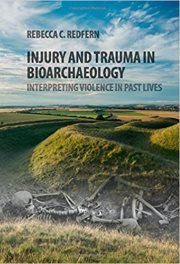Injury and Trauma in Bioarchaeology: Interpreting violence in past lives
 Rebecca C Redfern
Rebecca C Redfern
Cambridge University Press, £49.99
Many years ago, I was lucky enough to take part in an archaeological workshop where we handled actual Roman bones and discussed what they could tell us about the lives and health of their owners. Ever since then, I have been fascinated by bioarchaeology and in awe of scientists who can interpret such evidence.
Rebecca Redfern is one such scientist. As curator of human osteology at the Centre for Human Bioarchaeology at the Museum of London, as well as an honorary research associate at the Department of Archaeology at the University of Durham, she is well placed to write a text that bridges clinical medicine and social science. The detailed case studies go far beyond the identification of injuries on skeletal remains by considering the conditions that provoked the trauma and the social and biological consequences of the damage.
The examination of violence in particular cultures across different historical periods is an unusual approach and the underlying ethical issues raise interesting comparisons between what is acceptable in current western, non-western and historical peoples.
Early chapters attempt to explain and interpret violence in the past. This is followed by further chapters that describe violent behaviour in human societies, how violence is linked to environmental factors including exposure to pollution, injuries during 'life courses', intentional injury patterns and living with the consequences of injuries, which also includes animal studies.
As you would expect from a critical and comprehensive synthesis of the latest research, the text is heavily referenced. There are a few black-and-white photographs to complement the text – I would have liked more and perhaps in places, some diagrams to aid interpretation as well.
Elegantly written and immensely interesting, this book may be of interest to readers from a wide range of disciplines, including social scientists, sociologists, bioarchaeologists, medical anthropologists, forensic scientists, psychologists and historians.
Sue Howarth CBiol FRSB


